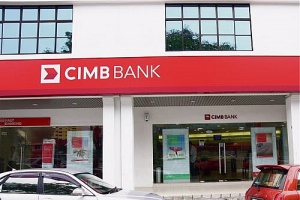Lenders elevate charter capital moves
 |
| Improving capital adequacy ratios can help banks manage risks more effectively, photo Dung Minh |
At a conference to review work and business activities in 2022 and set tasks for 2023 on January 8, Tran Minh Binh, chairman of VietinBank’s Board of Directors, revealed that it had been approved to retain all 2021 profits to create conditions to improve financial resources for sustainable business development.
Earlier in January, the State Bank of Vietnam (SBV) issued a decision on amending the content of charter capital in the licence of SHB, after the bank implemented a plan to issue shares for a charter capital increase last year.
The governor of the SBV made an amendment to allow SHB to issue an increased charter capital of $1.3 billion, up from the previous $1.1 billion.
Similarly, the SBV has decided to amend the content of the charter capital prescribed for Nam A Bank and MSB. The charter capital is $361 million for Nam A Bank and $847 million for MSB.
Towards the end of 2022, banks accelerated their charter capital increases. LienVietPostBank (LPB) was allowed to increase its charter capital by a maximum of VND5.25 trillion ($223.9 million) in the form of shares issuance to pay a maximum dividend of VND2.25 trillion ($96 million) in 2021, and issue to existing shareholders a maximum of VND3 trillion ($128 million). After completing the issuance, the bank’s charter capital will increase by 35 per cent.
Last year, the SBV approved the charter capital increase for nearly 20 joint stock commercial banks.
Explaining the banks’ urgent need to increase capital, BIDV chief economist Dr. Can Van Luc said that the capital adequacy ratio (CAR) of Vietnamese commercial banks was low compared to the rest of the region.
“As of June 2022, state-owned commercial banks’ CAR was around 8.9 per cent. In contrast, joint stock commercial banks increased from 11.9 to 12 per cent. This capital adequacy level is relatively low compared to other countries in the region,” he said.
According to Luc, most countries in the region have applied some or all Basel 3 standards, while Vietnamese commercial banks are just in the implementation phase of Basel 2. The low capital buffer level makes the banking system susceptible to negative impacts from adverse shocks.
“This comes from the fact that the increase in capital of commercial banks (especially state-owned commercial banks) still faces difficulties due to the declining capital market, making it harder to find foreign investors in a mild global recession. The approval process for the retention of state dividends and the selection of strategic investors and financial investors also takes a long time,” Luc said.
Tran Thi Khanh Hien, director of analysis at VNDirect Securities, added, “Capital increases are an urgent need of the banking industry on the way to Basel 3.”
According to Hien, Vietnamese banks have been trying to improve CAR. The ratio has significantly improved in recent years, as banks are gradually moving towards Basel 3 standards and building a solid capital buffer for future credit growth. Currently, there are more than 20 banks that have applied Basel 2 standards, of which, six have completed all three pillars.
“These moves would help banks manage risks and capital more effectively. The capital buffer of the Vietnamese banking industry is still relatively thin by international standards. In addition, the CAR of state-owned banks is only slightly above the minimum, and lower than that of private banks,” Hien said.
“We believe that banks will continue to pay dividends in stock instead of cash dividends 2023-2024 due to the urgent need to increase capital, especially banks with state capital,” he added.
At an SBV conference to review 2022 and look ahead to this year, Pham Duc An, chairman of Agribank’s Board of Members, said that due to low charter capital and given the current credit scale, Agribank could no longer guarantee the minimum CAR for credit growth.
“In 2022, Agribank’s credit growth was low compared to the overall system average. Accordingly, the provision of charter capital for us is urgent to ensure the minimum CAR for credit growth from the beginning of 2023 for the capital needs of the economy, especially in agriculture,” An said.
The government needed to advance charter capital to Agribank of VND6.75 trillion ($287.9 million), which the National Assembly (NA) has now approved, he added.
Pham Quang Dung, chairman of the board at Vietcombank, also proposed to continue to give prioritise increasing charter capital for state-owned commercial banks, as the scale of such capital and CAR is still modest compared to their development needs and international standards.
“Vietcombank plans to consult the SBV on increasing charter capital using all remaining accumulated profits of 2021 and previous years. This has been approved in principle,” Dung said. “Vietcombank is looking forward to receiving the attention and facilitation of the government, the SBV, and relevant ministries and agencies in gaining approval.”
Phan Duc Tu, chairman of BIDV’s Board of Directors, suggested that the government, the Ministry of Finance, and the SBV continue to allow state-owned commercial banks to increase their charter capital from after-tax profits and set up funds, in the spirit of a NA resolution from January 11 to increase financial resources and ensure CAR for state-owned banks.
“The CAR coefficient as of October 2022 for state-owned commercial banks was 9.04 per cent, and 12.92 per cent for joint-stock commercial banks. This is low compared to other countries in the region, such as the Philippines at 16.29 per cent, Singapore 17.2 per cent, and Malaysia 18.3 per cent,” Tu said.
 | Banks raise charter capital for new growth stage A slew of local and foreign banks are increasing charter capital to prepare for the new growth phase of the banking industry and the economy. |
 | Charter capital boost offers new credit room A handful of credit institutions are raising their charter capital in a bid to strengthen their financial buffer and competitiveness, while maintaining their capital adequacy ratio as required by regulators. |
What the stars mean:
★ Poor ★ ★ Promising ★★★ Good ★★★★ Very good ★★★★★ Exceptional
Related Contents
Latest News
More News
- Gold market reform advances as SBV receives applications for bullion production (December 30, 2025 | 12:07)
- EVN and AFD sign credit agreement for Vietnam’s first pumped storage hydropower plant (December 30, 2025 | 10:06)
- Techcombank Priority Visa Signature unlocks a higher standard of living (December 29, 2025 | 16:44)
- Tax sector wraps up 2025 and sets priorities for next year (December 25, 2025 | 14:00)
- A tipping point for digital and hybrid wealth management in Vietnam (December 23, 2025 | 13:33)
- $250 million deal targets women-owned SMEs, sustainable agriculture (December 22, 2025 | 17:40)
- Stock market posts resilient 2025 performance (December 19, 2025 | 18:17)
- Citi Vietnam receives 2025 AmCham CSR recognition (December 19, 2025 | 16:35)
- As global green supply chain reshapes, will Vietnam be left behind? (December 19, 2025 | 08:00)
- Banks gear up for massive capital increases (December 18, 2025 | 17:04)

 Tag:
Tag:





















 Mobile Version
Mobile Version